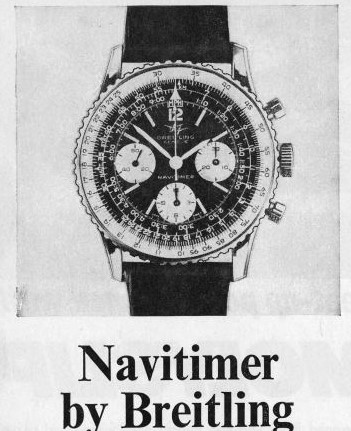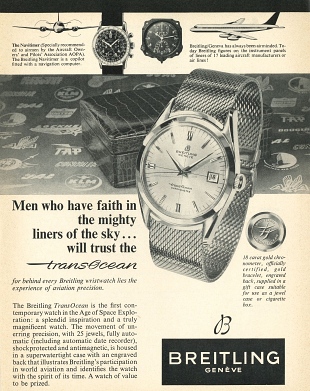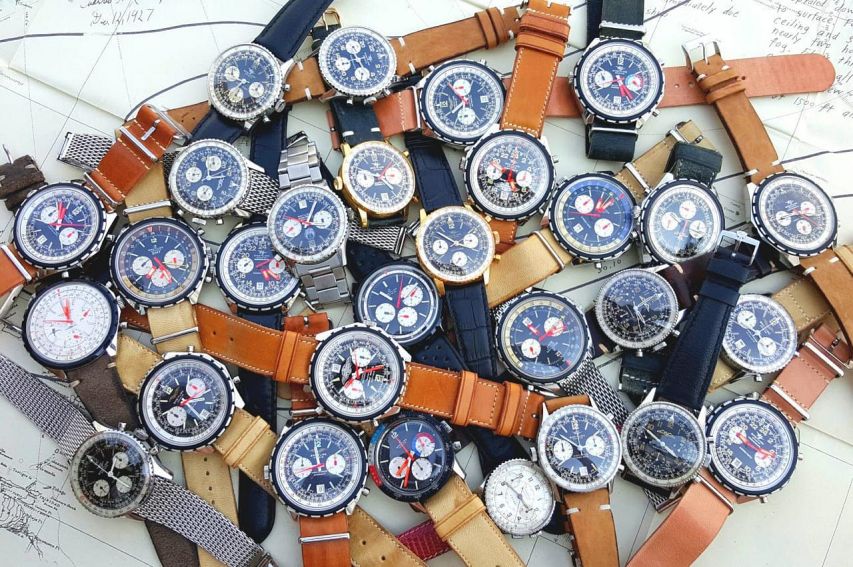Breitling, bringing science to time.?
Official Supplier to the World of Aviation
Leon Breitling – the beginning
Follow on for a brief history of the Breitling brand of watches and chronographs. Founded in 1884 in St. Imier Switzerland by Leon Breitling.
Breitling has been heavily involved in aviation since the beginning.

With a focus on Chronographs and precision instruments Leon Breitling soon gained a reputation for quality and excellence. Chronographs were used for sporting, events and scientific applications.
Breitling swiftly grew a reputation for sleek designs with uncomplicated manufacturing process with easy maintenance. Awards followed, prompting rapid growth; enabling the company to move to larger premises at La Chaux-de-Fonds and into the Montbrilliant building.
In 1893 Breitling patented a movement with a power reserve of 8 days. In 1896, they had a chronograpgh that was accurate to two fifths of a second. They developed a model with a pulsograph for doctors for measuring heart rates.
In 1905 Breitling patented a timer/tachymeter to measure any speed between 15 and 150kph. The Vitesse timer allowed drivers to check their speeds, and the police to do the same.
Gaston Breitling – the innovator
In 1914 Gaston Breitling (Leons’ son) took over the business. Gaston shared his fathers’ passion for chronographs. In 1915 he developed a chronograph with a separate pusher at 2 on the dial.
This enabled pilots to start and stop the second hand, and then, return it to zero. This allowed the resetting of the stopwatch function, enabling the measurement of successive short times.
The was the timepiece that pilots had been looking for. It was far easier to use when in the cockpit.
1n 1923, Gaston separated the reset function form the pusher. Leaving the start and stop functions with the pusher and the reset at the crown.
Gaston Breitling dies in 1927, his son Wiley is only 14 the company is managed by a team for the next 5 years.
Wiley Breitling – more innovation
In 1927 Wiley Breitling assumes leadership of the company. Chronographs are still the heart of the business with over 40 models for the cockpit or aviation.
In the 1930’s Breitling increases the range of chronographs for the cockpit of aeroplanes.
In 1934 Wiley Breitling filed a patent to add an additional pusher at the 4 o’clock position on the dial. One to start and pause the timer and the second to reset the timer.
This design has been adapted by numerous brands, and remains the norm for chronographs today.
In 1936 a special aviator chronograph was introduced with a black dial, luminescent hands and numerals and a rotating bezel with a pointer arrow. Breitling also becomes the official supplier to the Royal Air Force of Great Britian.
During the war Breitling us forbidden to export time pieces to the allies. Wiley Breitling would meet planes at a field near the factory with some of his friends to deliver time pieces to the allies. They would use their automobiles to light up the runway for the approaching planes.
In 1942 Breitling introduces the Chronomat, the first chronograph to be fitted with a circular slide rule.

In 1942 Breitling introduces the Chronomat with a circular slide rule.
In 1952 Breitling launches the Navitimer (Navigation Timer). This piece contains a flight-specific slide rule in the rotating bezel. It is an iconic design that is produced to this day. The Navitimer is capable to helping to perform all calculations required by any flight plan.

A Computer that tells you the Time Navitimer by Brietling
The Aircraft Owners and Pilots Association (AOPA), was quick to adopt the Navitimer as its official watch and features its winged logo on the dial.
By this time Breitling is supplying many major airlines with cockpit clocks.
The Breitling Super Ocean was also developed in the 1950’s. Waterproof to 20 bar (~200 meters), followed by the TransOcean in 1958. A shock-proof, anti-magnetic, automatic, super-sealed timepiece.

The TransOcean shock-proof, anti-magnetic, super sealed timepiece.
In 1969 Breitling in collaboration with Heuer introduces the legendary Calibre 11. Arguably the first self-winging chronograph movement. The Huer Monaco and Breitling Chrono-Matic collections were based on the Calibre 11.
Moving Forward
In 1979 Ernest Schneider takes over Breitling from the Breitling family. Ernest is a watchmaker, pilot and micro electronics specialist.
In 1984 Breitling re-introduces the Chronomat, a return to the mechanical automatic chronograph after the quartz craze. The Chronomat with its distinctive bezel riders quickly becomes a best-selling time piece, a position it still enjoys to this day.
In 1985 the multi-function Aerospace quartz watch was introduced. With analog hands and two digital screens it was noted for its logical control system and an impressive array of functions that were accessible by pressing or pulling the crown.
Breitling was still at the forefront of watch development creating the aerospace (1985). The Emergency (1988), and the B-1 Super Quartz).
In 2009 Breitling introduces the Calibre-01 the brands most precise self-winding chronograph movement.
Breitling continues to push the boundaries of watchmaking with the Chronospace in 2010 and the Exospace in 2015.
In 2016 the B55 Connected the first Breitling smart watch is introduced, combining traditional watch elements with smart phone connectivity.
The Present
In 2017 Breitling became part of CVC Capital with Georges Kern as CEO. Georges has already enjoyed a distinguished career in the watch making industry and will ensure Breitling continues to be an iconic watch brand .

